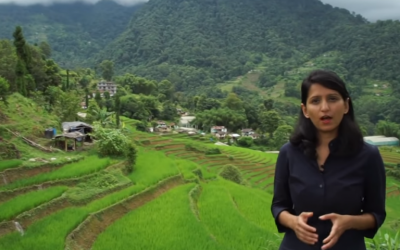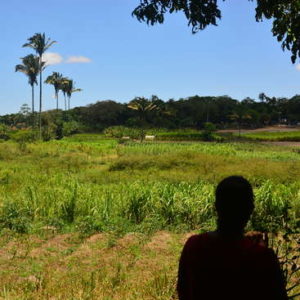KCET - Jan 18, 2017
Jules Dervaes was an extraordinary person. He was the head of a family in Pasadena who grows almost all their own food. They have turned their normal size backyard into one of the most fertile and productive tiny farms in all of southern California. More than 400 different vegetables, herbs and fruits grow in every nook and cranny, along with goats, chickens, bees and ducks.
Jules was the creator of this “Urban Homestead.” When I interviewed him for this story he generous with his time, genuine in manner and deeply concerned about what we eat and how we care for the planet. He did more in one lifetime to nurture the environment than most of us could do in multiple lifetimes.
The thousands of people who have visited the Dervaes’ farm or purchased produce from their porch can see Jules’ love in the picturesque garden that surrounds their Pasadena bungalow. His legacy is in the small plot of earth he nurtured and in the big ideas he spread to people around the world.
Jules Dervaes died in December 2016 at age 69. His three children continue to tend the homestead and carry out the cause.
Thank you, Jules, for all you’ve taught us.
Urban Farm
Growing one’s own food in urban areas can seem like a far-fetched idea. But not for one Pasadena family. The Dervaes family has been growing their own food for more than a decade. They’ve been at the forefront of urban homesteading by growing thousands of pounds of food annually in an average-size backyard.
“I brought the country to the city rather than having to go out to the country,” said Jules Dervaes, the man behind the self-sufficient farm he created with his three adult children.
The Dervaes’ urban homestead is sustainable and dense. They grow and raise 400 varieties of vegetables, fruits, and edible flowers that amount to about 6,000 pounds of food a year, enough to feed the family with surplus left over to sell. Fresh eggs from chickens round out their diet. The family-owned city farm is the talk of the town for many local chefs looking to cook up a tasty meal. The family makes roughly $20,000 just from selling their freshly grown produce. They use the money to buy staples that they can’t grow like wheat, rice, and oats.
Reporter Val Zavala visits the Dervaes’ homestead to find out what inspired Jules Dervaes to go green in the extreme.


